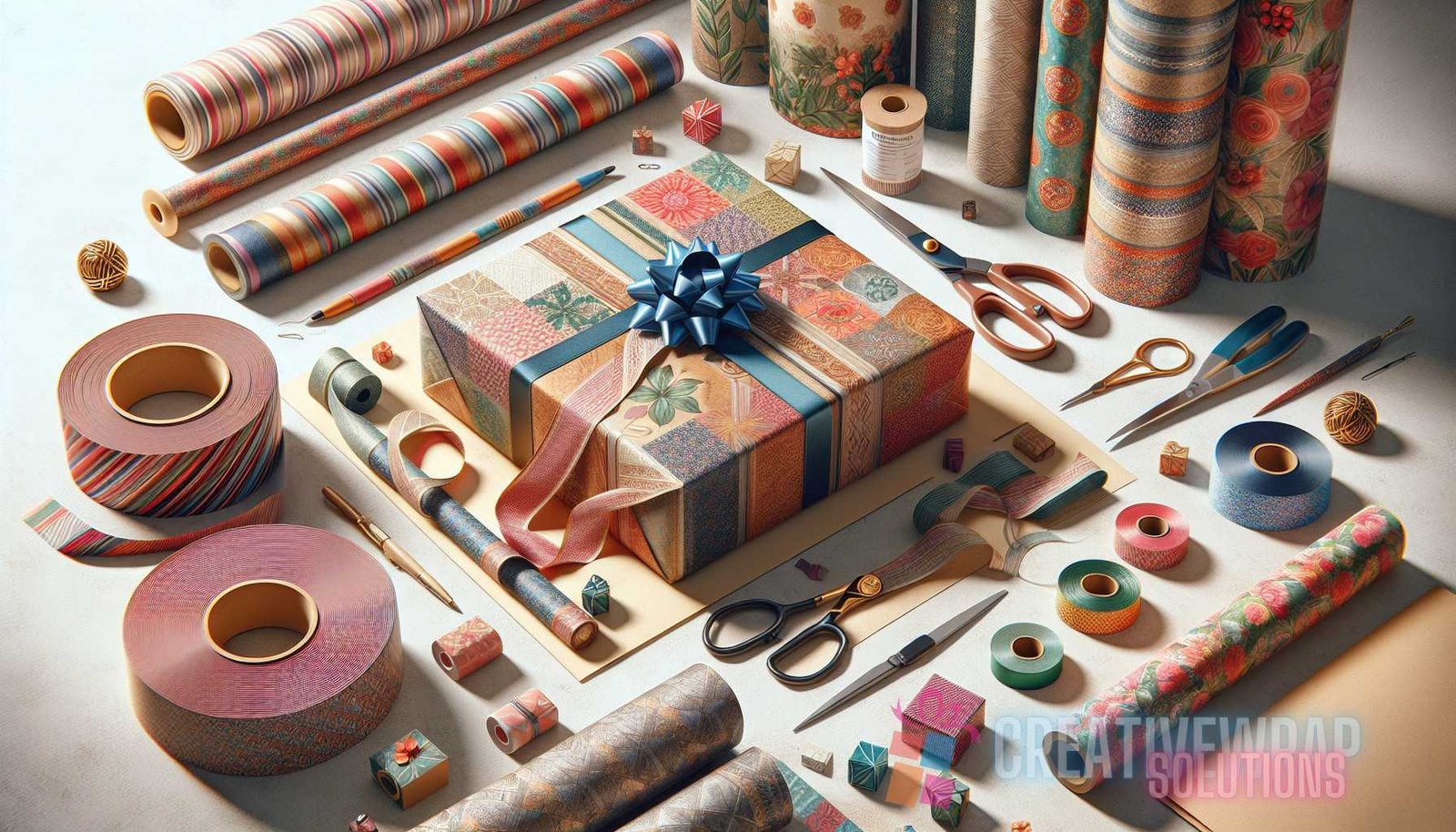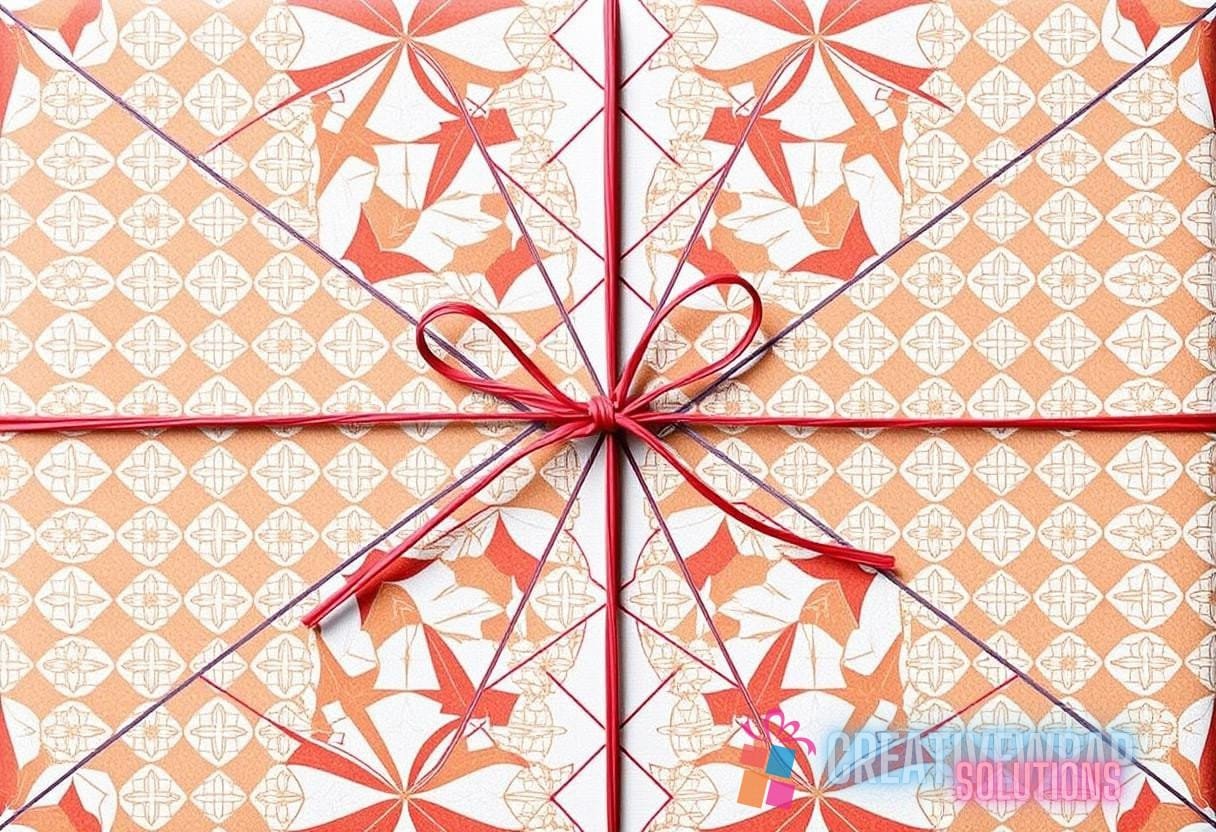Introduction
Gift wrapping is an art form that has been practiced for centuries. It involves a delicate combination of creativity, precision, and attention to detail, resulting in a visually appealing presentation of a gift. But beyond its aesthetic value, gift wrapping also holds a deeper significance. It enhances the anticipation and excitement of receiving a present, creating a sense of wonder and surprise. In this guide, we will unravel the fascinating science of gift wrapping, exploring the art and mind behind mesmerizing presents.
1. The History of Gift Wrapping
Gift wrapping has a rich and diverse history that spans across different cultures and time periods. The tradition of wrapping gifts can be traced back to ancient civilizations such as the Egyptians, who used papyrus to envelop precious offerings to their gods. In medieval times, nobles adorned gifts with elaborate paper and ribbons to demonstrate their wealth and status. The modern practice of gift wrapping as we know it today can be credited to the Victorians, who popularized the use of decorative paper and ribbons to conceal and embellish presents.
Key Takeaways:- Gift wrapping has a long history, dating back to ancient civilizations.
- The Victorians played a significant role in popularizing the modern practice of gift wrapping.
2. The Science of Gift Wrapping
2.1 The Psychology of Gift Wrapping Gift wrapping plays a crucial role in the psychological experience of giving and receiving gifts. The act of wrapping a gift involves thoughtfulness, care, and effort, which are perceived positively by the recipient. According to research, the presentation of a gift has a significant impact on the perceived value and emotional response to the gift. Well-wrapped gifts are often associated with sentimentality, attention to detail, and a personal touch. 2.2 The Elements of Gift Wrapping Gift wrapping involves various elements, each contributing to the overall presentation of the gift. These elements include: 2.2.1 Wrapping Paper The choice of wrapping paper can set the tone and theme for the gift. Different patterns, colors, and textures can evoke different emotions and create a specific atmosphere. For example, vibrant and cheerful wrapping paper can convey a sense of joy and excitement, while elegant and understated paper can evoke a more sophisticated and refined feel. 2.2.2 Ribbons and Bows Ribbons and bows are essential accessories that add a final touch to the gift. They can enhance the visual appeal, create texture, and provide an element of surprise when unwrapping. Different types of ribbons and bows can be used to achieve various effects, such as satin ribbons for a luxurious look or raffia bows for a rustic feel. 2.2.3 Gift Tags Gift tags are small cards or labels that are attached to the gift, often containing a message or the recipient’s name. They add a personal and thoughtful touch to the gift, making it more meaningful and individualized. Gift tags can be customized with handwritten notes, stickers, or even photographs to create a unique and personal connection. Key Takeaways:- Gift wrapping can have a significant impact on the perceived value and emotional response to a gift.
- Elements such as wrapping paper, ribbons, and gift tags contribute to the overall presentation of a gift.
3. Techniques for Gift Wrapping
3.1 Choosing the Right Wrapping Paper Selecting the appropriate wrapping paper is crucial to achieve the desired look and feel of the gift. Consider the following factors when choosing wrapping paper: – Theme: Match the wrapping paper to the occasion or theme of the gift. For example, use festive paper for Christmas gifts or romantic paper for Valentine’s Day presents. – Color: Choose colors that complement each other and create a visually pleasing combination. – Texture: Experiment with different textures, such as glossy or matte, to add depth and dimension to the gift. 3.2 Wrapping Techniques There are several techniques for wrapping gifts, each with its own set of instructions and variations. Here are some commonly used techniques: 3.2.1 Traditional Wrap The traditional wrap involves folding the edges of the wrapping paper neatly and using adhesive tape to secure them. This technique is suitable for most gift shapes and sizes. 3.2.2 Box Wrap When wrapping gifts with a box-like shape, such as books or clothing, the box wrap technique is often used. It involves wrapping the gift in a larger piece of paper, folding the edges to create neat corners, and sealing them with tape. 3.2.3 Corner Wrap For gifts with irregular shapes or sharp corners, the corner wrap technique is ideal. It involves folding the wrapping paper around the gift in a way that neatly covers the corners and edges. 3.3 Adding Ribbons and Bows Once the gift is wrapped, adding ribbons and bows can enhance the overall presentation. Here are a few tips for adding ribbons and bows: – Choose ribbons that complement the wrapping paper and create a cohesive look. – Experiment with different bow styles, such as traditional bows, pom-pom bows, or ribbon flowers, to add visual interest. – Use adhesive tape or hot glue to secure the ribbons and bows in place. Key Takeaways:- Choosing the right wrapping paper is important for achieving the desired look and feel of the gift.
- There are various techniques for wrapping gifts, including the traditional wrap, box wrap, and corner wrap.
- Adding ribbons and bows can enhance the overall presentation of the gift.

4. Gift Wrapping as an Art Form
Gift wrapping is not just a practical skill but also a form of art that allows individuals to express their creativity and personal style. Like any other art form, gift wrapping requires practice, attention to detail, and an understanding of design principles. Here are some ways in which gift wrapping can be considered an art form:
4.1 Color Theory Color plays a vital role in the visual impact of a gift. Understanding color theory can help gift wrappers create harmonious combinations and evoke specific emotions. For example, using complementary colors (colors from opposite sides of the color wheel) can create a visually striking contrast. 4.2 Composition and Balance Creating a balanced composition is essential in gift wrapping. Balancing the elements, such as the size and placement of bows and ribbons, helps create a pleasing visual arrangement. The rule of thirds, a principle used in photography and art, can be applied to gift wrapping to achieve balance and harmony. 4.3 Embellishments and Personal Touches Adding embellishments and personal touches can elevate the artistry of gift wrapping. This can include handcrafted tags, unique ornaments, or even small trinkets that reflect the recipient’s interests or personality. These details add a layer of thoughtfulness and make the gift even more meaningful. Key Takeaways:- Gift wrapping can be considered an art form that allows for creative expression.
- Understanding color theory and composition can help create visually appealing gifts.
Conclusion
Gift wrapping is not merely a way to conceal a present; it is an art form that enhances the gift-giving experience. The choice of wrapping paper, the techniques used, and the attention to detail all contribute to the overall presentation and emotional impact of the gift. By unraveling the fascinating science of gift wrapping, we have gained insights into the art and mind behind mesmerizing presents. Whether wrapping a gift for a loved one or indulging in the artistry of gift wrapping, the process is an opportunity to create joy, anticipation, and a moment of wonder for both the giver and the recipient.
External Link:


